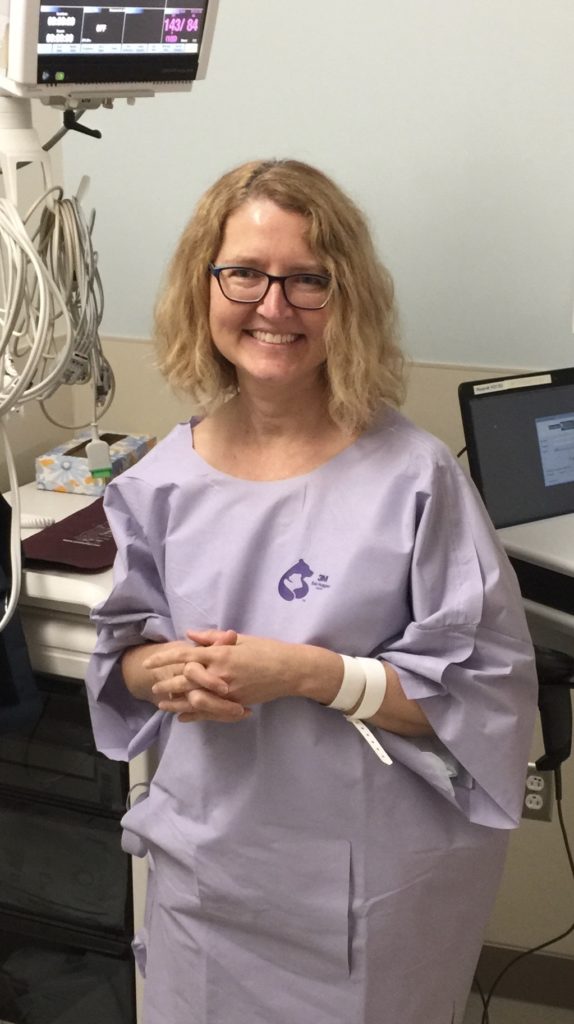I am writing this article from two perspectives- as a Diabetes Care and Education Specialist (CDCES) and as a person who has successfully recovered, hopefully forever, from Cushing’s disease (pituitary surgery May 2018).
It has been estimated that about 70% of people with Cushing’s have some type of impairment with blood sugar (glucose) according to Mattia Barbot et al. Some people will have mild elevations in blood glucose while others develop diabetes and require medications including insulin.
How and Why Does Cushing’s Increase Blood Glucose?
I will start with explaining the normal cortisol response to stress and subsequent effect on blood glucose in people without Cushing’s:
- A person is faced with a stressor, this could be an emotional situation or physical issue such as an infection
- ACTH (adrenalcorticotropic hormone) is released from the pituitary gland to stimulate the adrenal glands to make cortisol
- Among other actions, cortisol will prepare the body for the fight-or-flight response by flooding it with glucose to supply immediate energy and decreasing insulin in an attempt to prevent glucose from being stored
- The stressful situation is diminished
- Cortisol levels return to normal
In the above process, glucose is increased only momentarily; therefore it usually does not lead to problems. However, with Cushing’s there is always excess ACTH and cortisol floating around, so the negative effects on blood glucose and insulin are constant. This often leads to some type of abnormality in glucose metabolism such as glucose intolerance, prediabetes, or diabetes. If untreated, these conditions can lead to further complications.
Should Every Person With Cushing’s be Screened for Glucose Abnormalities?
According to the 2020 American Diabetes Association (ADA) Standards of Medical Care, anyone over the age of 45, or who has a history gestational diabetes, or who is obese and has at least one of the following risk factors should be considered for diabetes/prediabetes testing:
- family history of diabetes
- history of polycystic ovarian syndrome (PCOS)
- lack of exercise
- high blood pressure
- high cholesterol
- heart disease
- certain races/ethnicities such as African Americans, Latinos, Native Americans, and Pacific Islanders
The guidelines also include “other conditions associated with insulin resistance” in this list. I would consider Cushing’s to be such a condition although the ADA guidelines do not specifically state this disease. Besides having any of the risk factors listed above, another reason to get screened is if you notice symptoms of diabetes/prediabetes which include increased hunger and thirst, excessive urination, and fatigue. However, note that most of these symptoms can be common in Cushing’s without regard to blood glucose levels.
In my case, I had only one risk factor but ended up getting fasting blood glucose and A1C tests done (A1C shows a 2-3 month blood glucose average). I was found to have prediabetes. I monitored my glucose at home and found my glucose to be totally normal during the day but then it often rose to high 200s at bedtime. According to Mattia Barbot et al, this can be a typical pattern with Cushing’s-related hyperglycemia (high blood glucose). These high bedtime readings may explain why I began to wake up four or five times a night to urinate copious amounts of clear urine despite purposely limiting fluids after 5pm. Based on my experience and the ADA guidelines, I recommend that all people diagnosed with Cushing’s have some type of glucose testing performed, especially anyone with risk factors for diabetes/prediabetes.
Will Blood Glucose Return to Normal After Treatment?
According to the CSRF website, Dr James Findling states, “Following recovery from Cushing’s syndrome, diabetes is almost always easier to manage and may even completely resolve.” In my case, my A1C went from 5.8 (prediabetes) with Cushing’s to an A1C of 5.3 (normal) about six months after surgery. I was no longer having blood glucose readings in the high 200s at night, a decrease that occurred within 24 hours after surgery. Note that it can take some time to show an improvement in A1C due to this test being a three-month average. Also, it’s possible that a person with Cushing’s can be diagnosed with diabetes/prediabetes unrelated to the Cushing’s, so in that case the glucose issues would not resolve after treatment.
The good news is that blood sugar issues do often improve after Cushing’s treatment. If you still have prediabetes or diabetes despite Cushing’s treatment, be sure to work with your health care team which may include a physician, CDCES, dietitian, pharmacist, and exercise professional. They can provide support and education to assist you with developing a healthy lifestyle for blood sugar management.
Mary Sikora-Petersen is a CSRF member, Diabetes Care and Education Specialist, Registered Dietitian Nutritionist, and National Board Certified Health and Wellness Coach who helps patients manage chronic disease by adapting a healthy lifestyle.
References:
Mattia Barbot, Filippo Ceccato and Carla Scaroni: Diabetes Mellitus Secondary to Cushing’s Disease. Frontiers in Endocrinology Jun 04 2018; 9:284
American Diabetes Association-Classification and diagnosis of diabetes: Standards of Medical Care in Diabetes 2020. Diabetes Care 2020;43(Suppl. 1):S14–S31
CSRF Website accessed 5/25/2020






Sorry, comments are closed for this post.